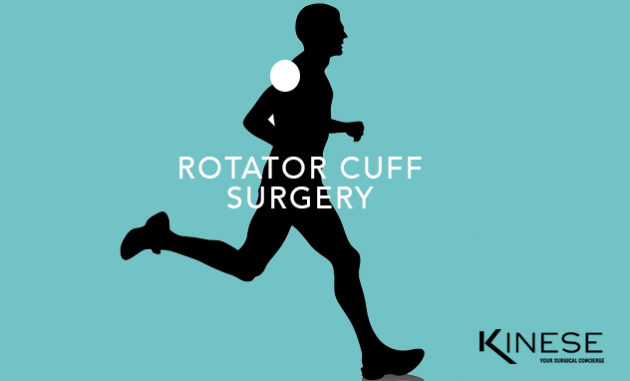FAQ: Rotator Cuff Surgery

What is a Rotator Cuff Tear?
A rotator cuff tear is a common injury in both athletes and non-athletes alike. The rotator cuff tendon is located in the shoulder and is connected to the humerus. This tendon allows the shoulder to lift overhead and rotate the arm. When the rotator cuff is torn, which means it has detached from the humerus, it can cause serious pain in the shoulder and often times causes shoulder immobility.
What Causes It?
Rotator cuff tears can occur instantaneously from an acute injury such as a hard fall or acquired through repeated strenuous activity to the shoulder. Activities that may cause wear and tear on the rotator cuff include all overhead sports such as volleyball and tennis. When a rotator cuff is torn the patient will feel pain at the top of the shoulder that often feels as if it is moving down the side of the arm. A higher intensity of pain will occur with overhead activities such as putting a shirt on and reaching for a glass on a high shelf. Another common symptom among patients with a rotator cuff tear is shoulder pain when sleeping on the affected side.
What Happens During Rotator Cuff Surgery?
There are three different types of rotator cuff surgery: open, arthroscopic and mini-open. An open rotator cuff repair surgery is typically performed for complex tears. In this case, the shoulder is cut completely open and the deltoid muscle is removed in order for the surgeon to gain access to the rotator cuff tendon underneath. The surgeon will then use suture anchors and stitches to attach the rotator cuff back to the bone. The suture anchors dissolve over time and do not need to be removed.
During an arthroscopic rotator cuff repair, the surgeon makes a small incision and inserts an arthroscope, which is connected to a video monitor. This allows the surgeon to perform the surgery by watching the video screen, effectively eliminating the need for the shoulder to be fully open and exposed. Three more small inserts are made in order to allow other instruments access during the surgery. The same suture anchors and stitches used in the open rotator cuff surgery are used during an arthroscopic rotator cuff surgery to attach the rotator cuff tendon back to the bone.
A mini-open rotator cuff repair is a combination of both previously discussed surgeries. Using an arthroscope the surgeon will first make a small incision to repair any damaged tissue or bone spurs. The surgeon will then make another incision of about 2-3 inches in length and repair the rotator cuff with suture anchors and stitches.
How Long is Full Recovery?
Of course, this varies from person to person. However, the average recovery time is between 4-6 months. The first 4-6 weeks the patient needs to wear a sling in order to prevent the shoulder from moving. After the initial 6 weeks following surgery, physical therapy is typically prescribed in order to help regain shoulder strength and restore natural mobility.
I am Traveling for Surgery. What Does this Entail?
When traveling for orthopedic surgery it’s important to know that you may not be able to travel home directly after your procedure. For an orthopedic surgery procedure, patients typically allow 1-2 weeks following surgery before flying. This period of time is to allow for the patient to attend their follow up appointment with the surgeon who performed their surgery. It also allows for there to be immediate assistance for the patient should a post surgery complication occur. Every patient and surgery is different. Consult with your doctor to determine how long before you will be healthy enough for travel and plan your medical trip accordingly (or allow Kinese to do that part for you!).
